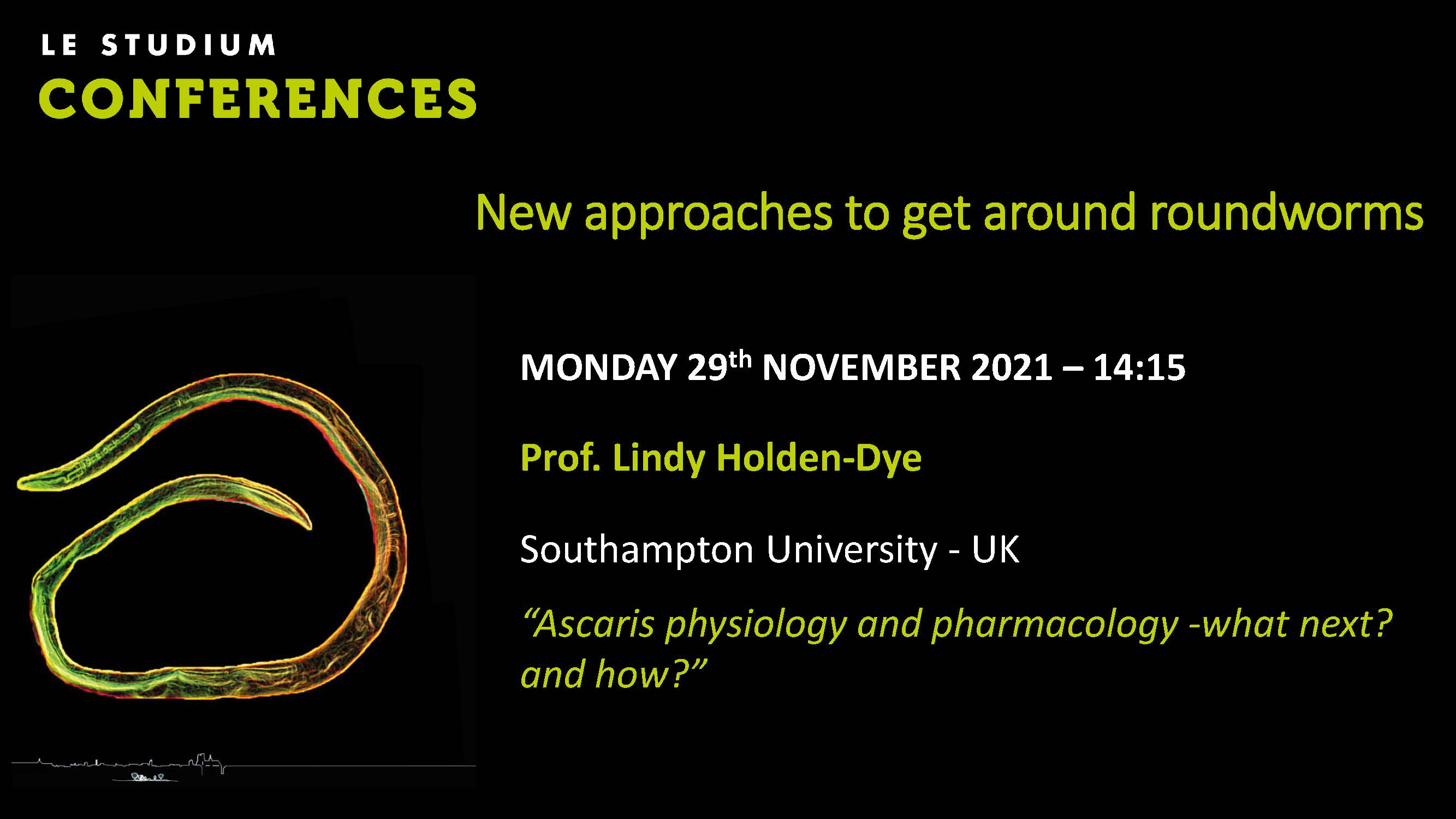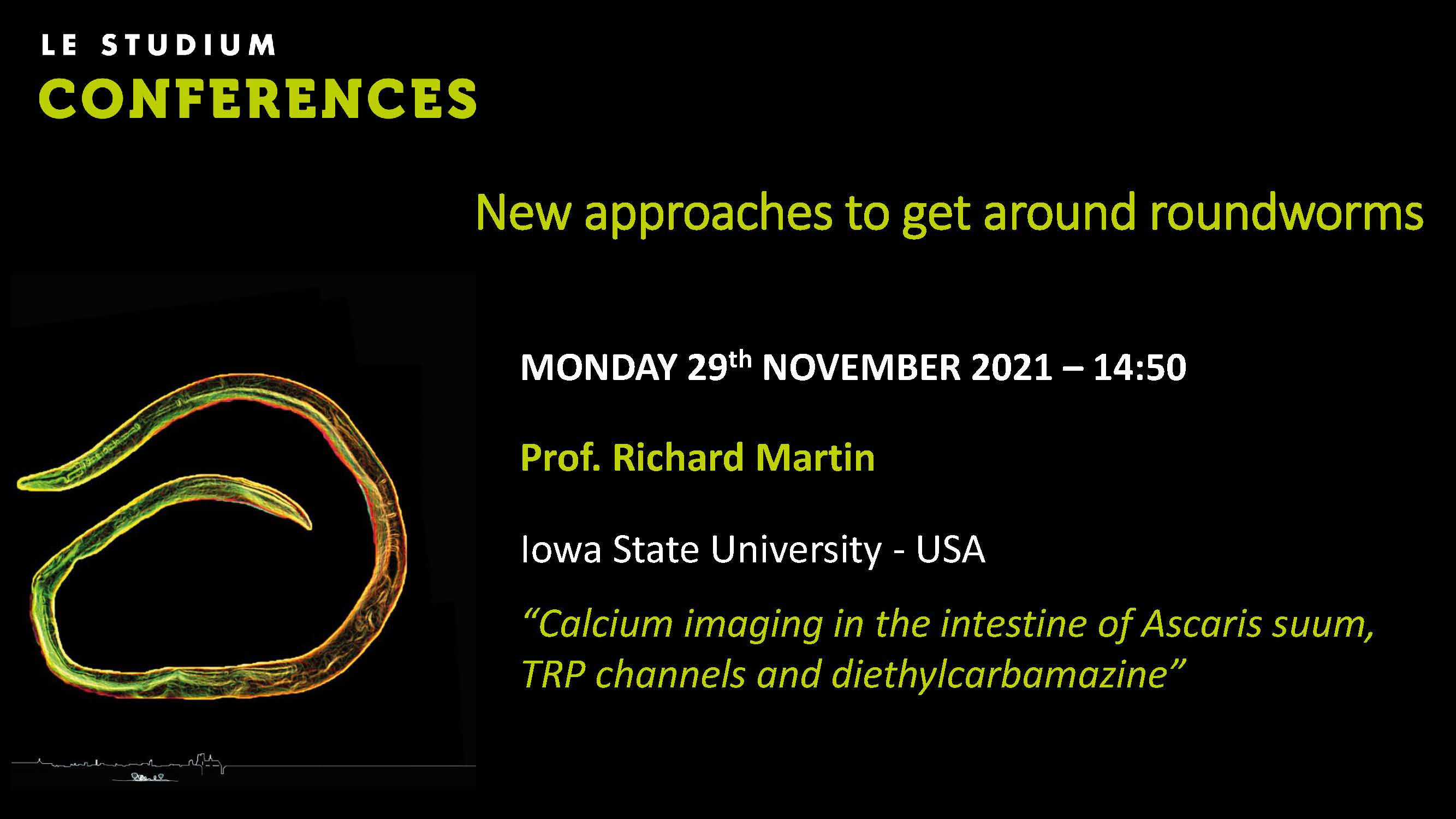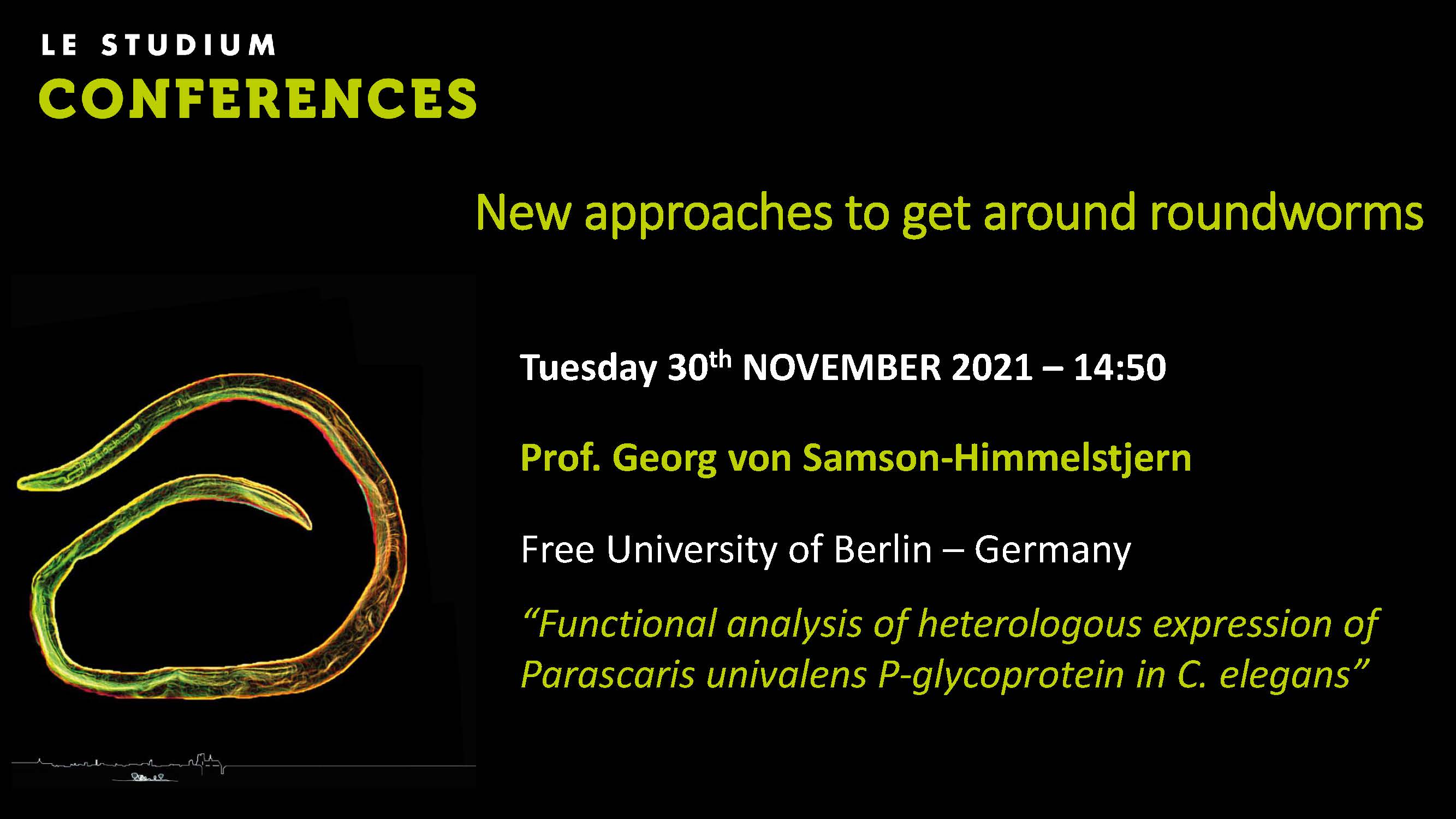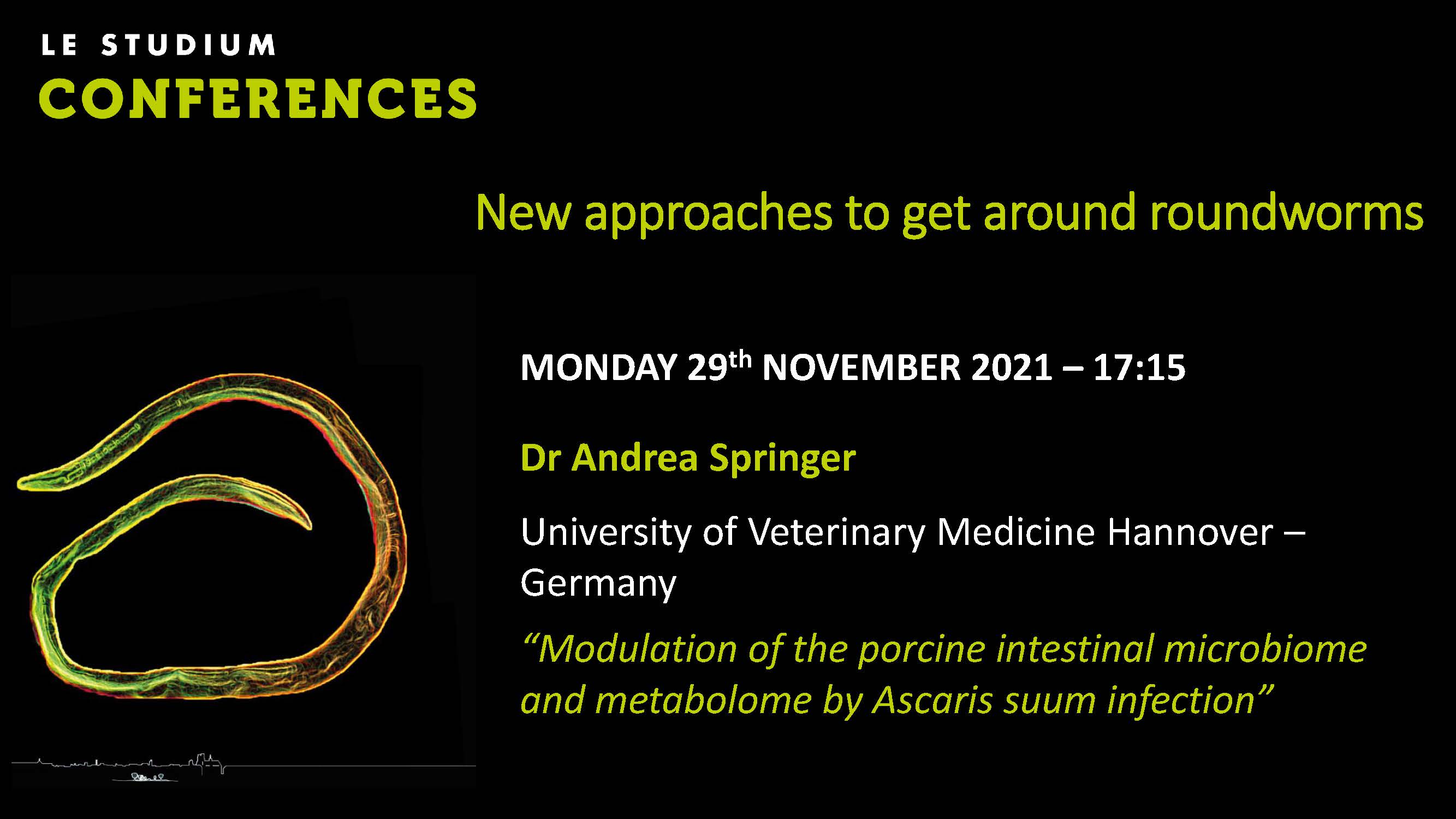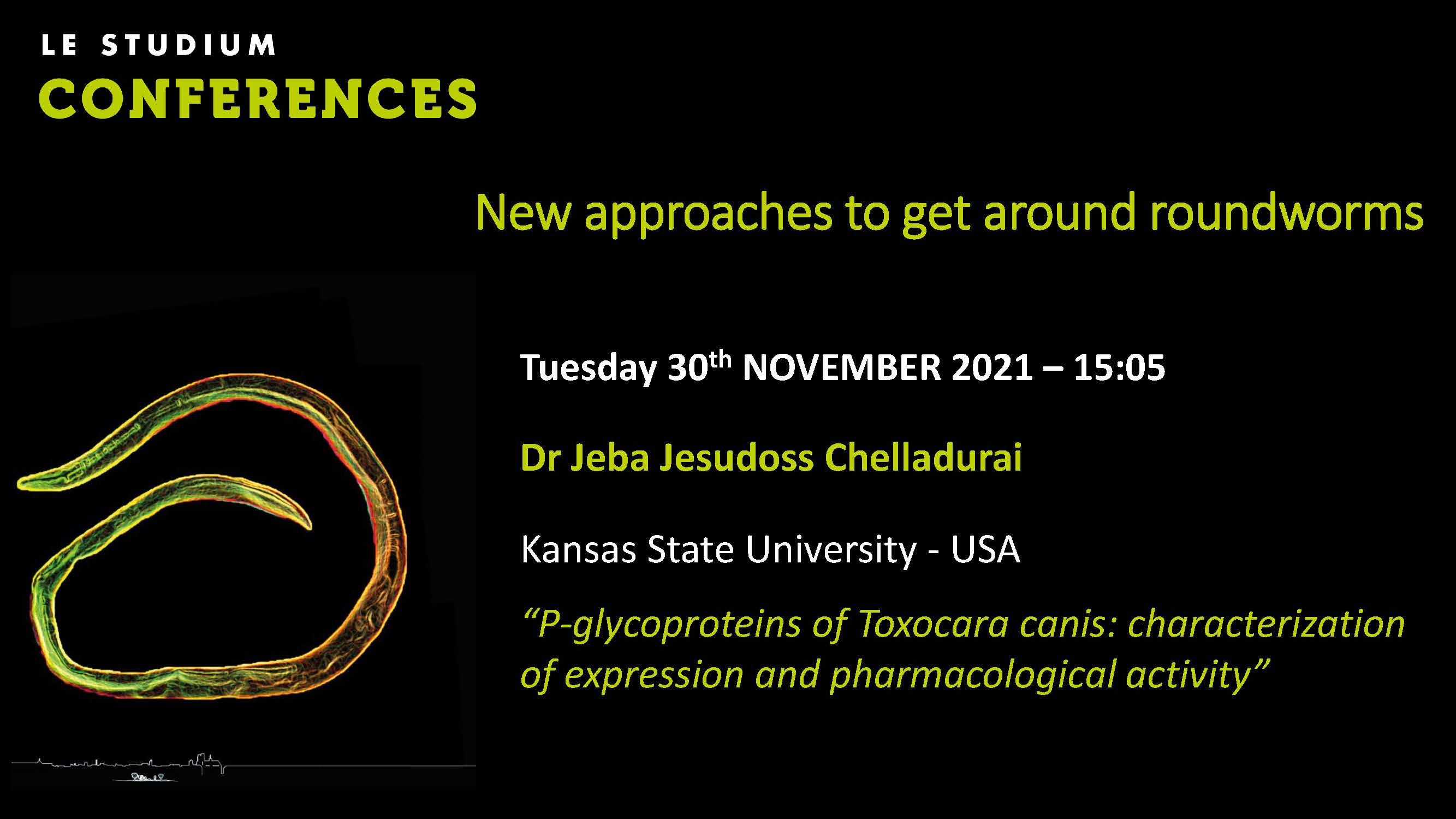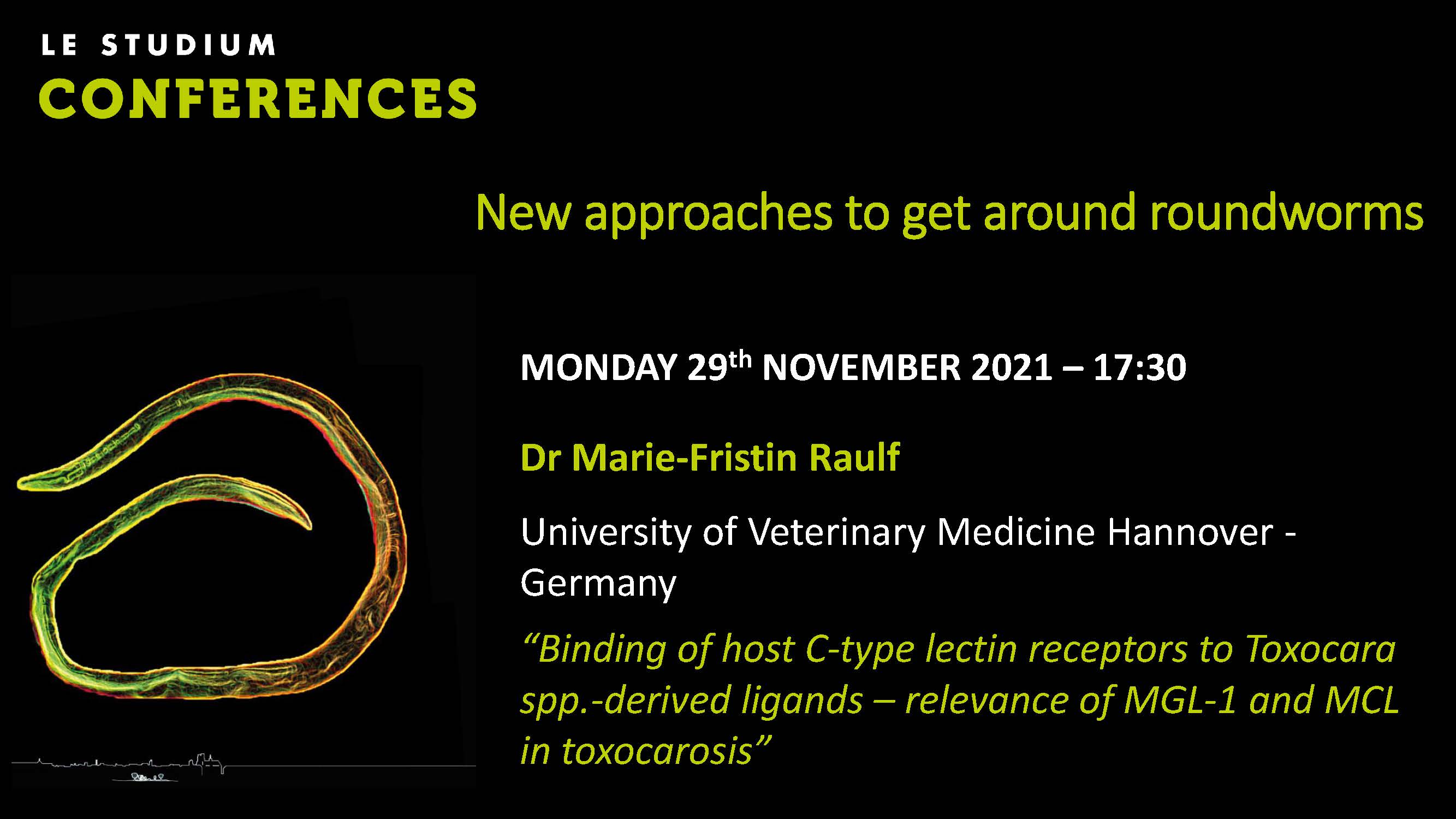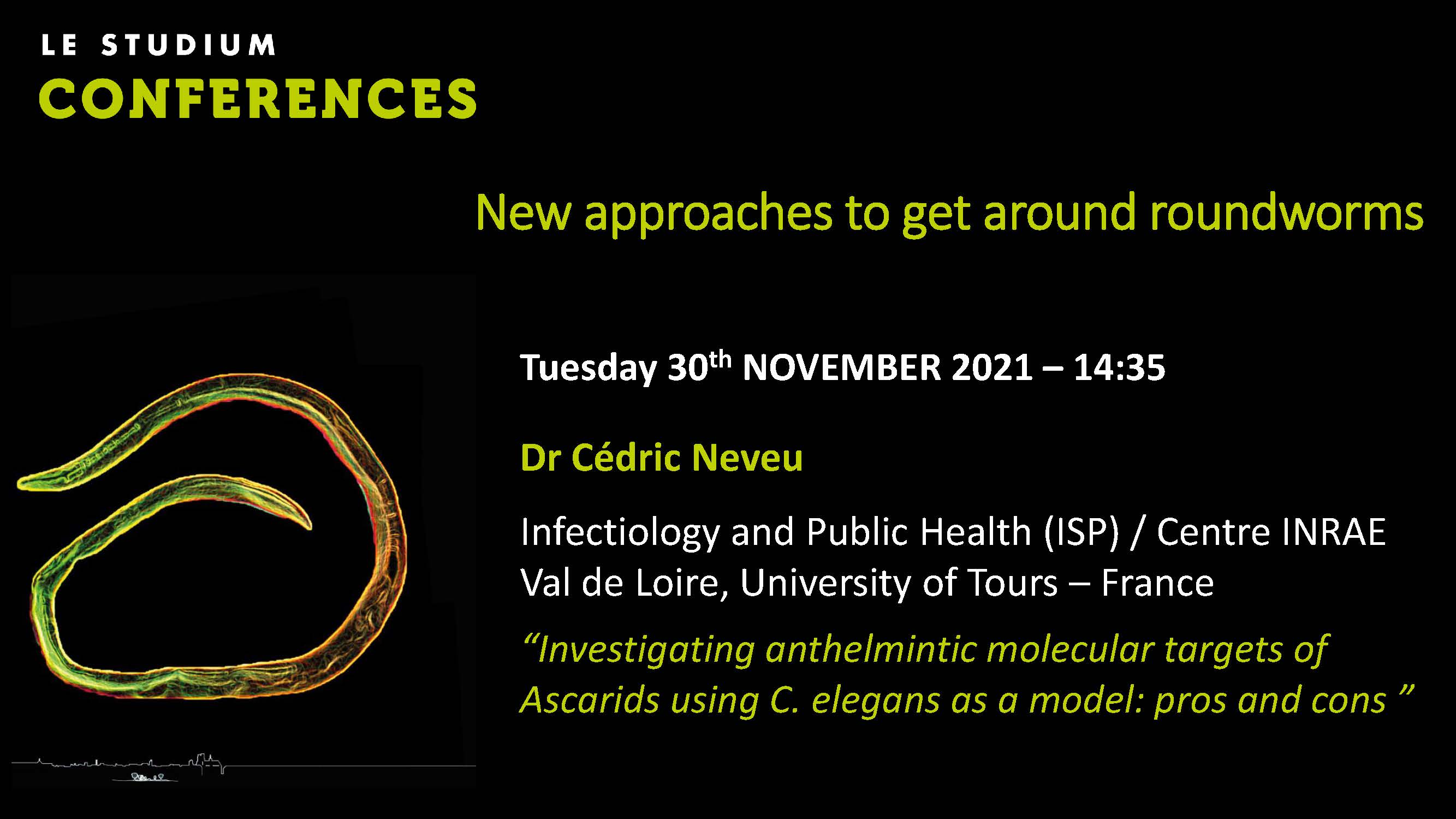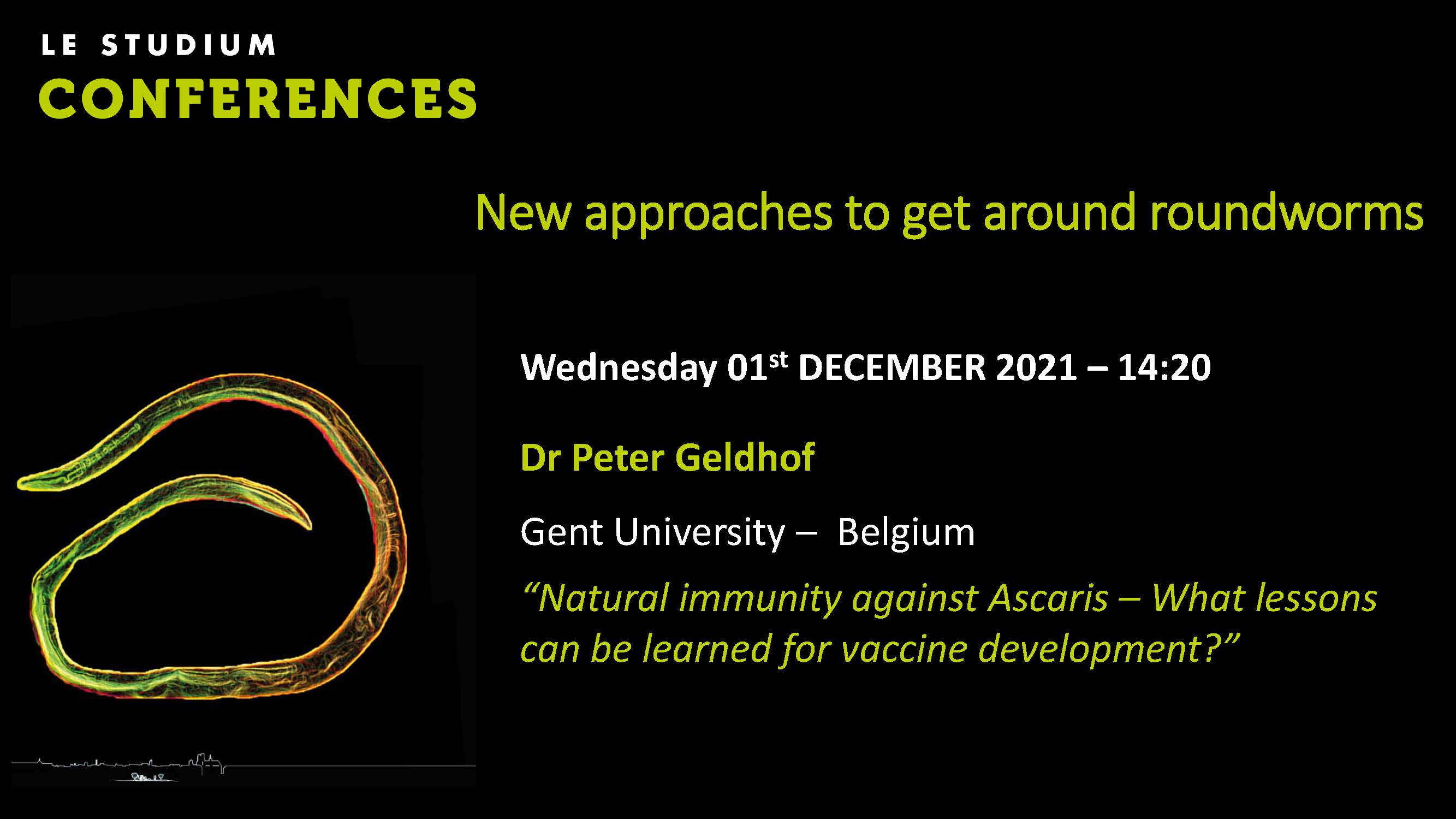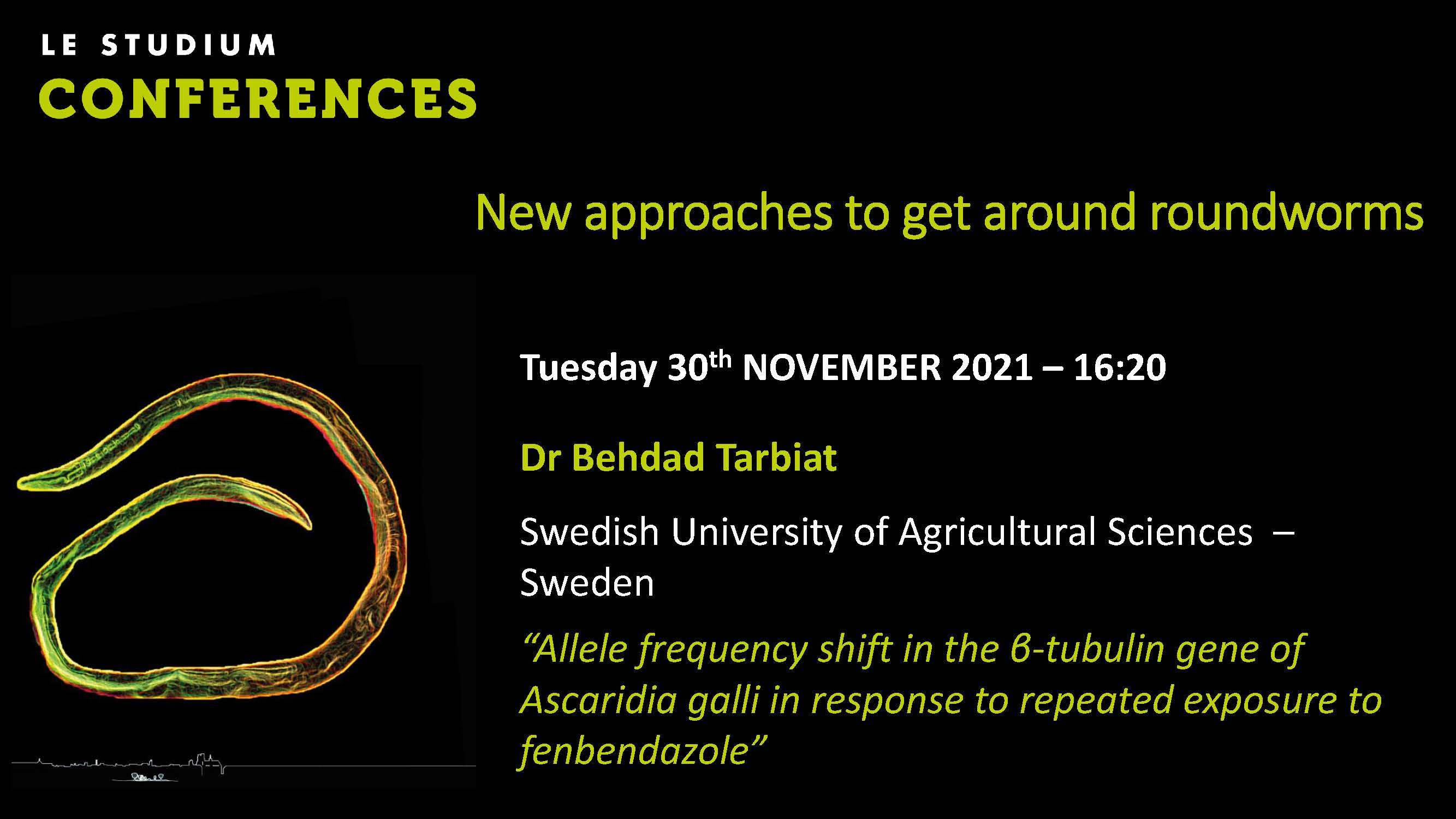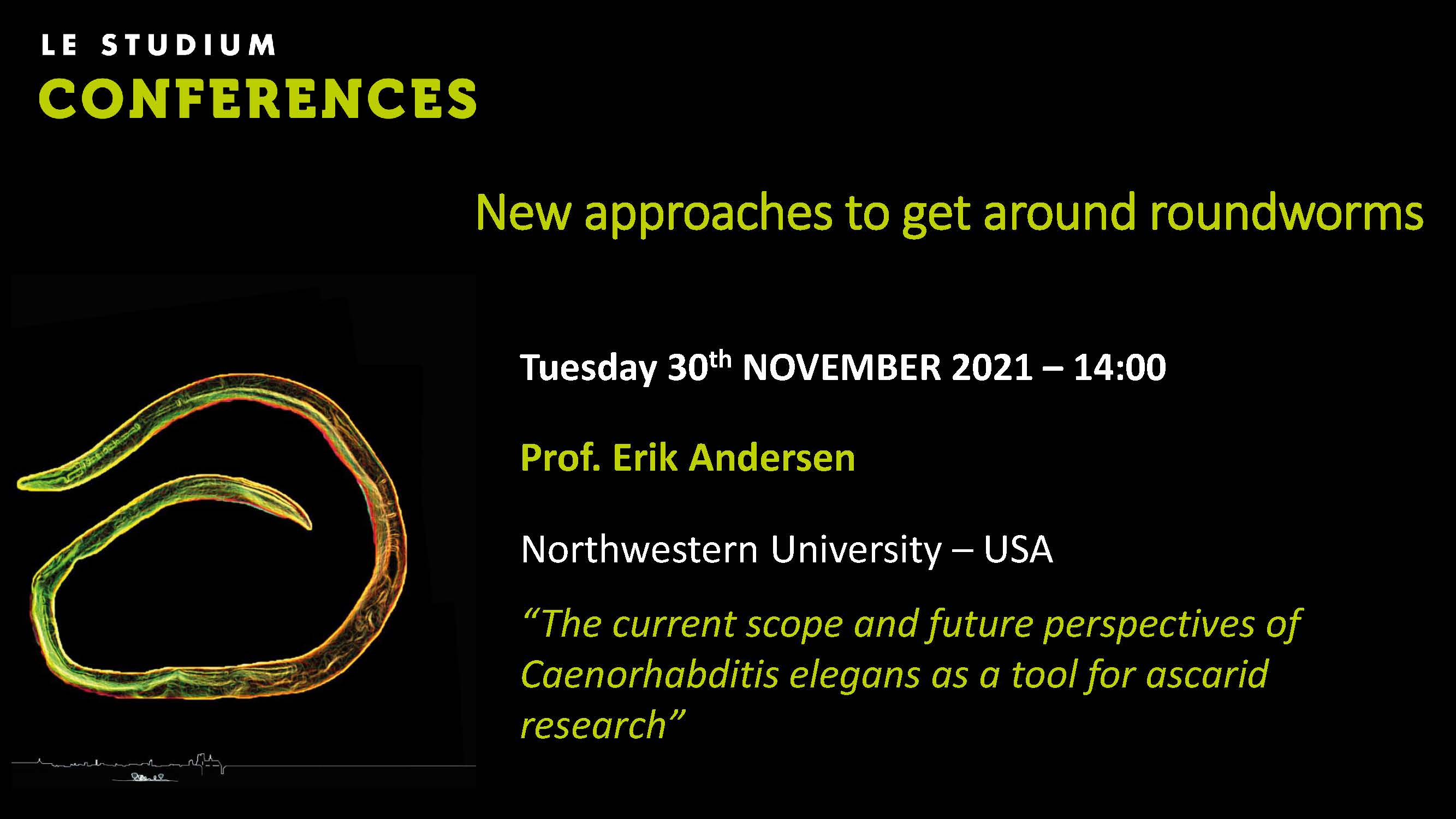Notice
Dr Paul Williams - Calcium imaging of Cry5B action on the intestine of Ascaris suum
- document 1 document 2 document 3
- niveau 1 niveau 2 niveau 3
Descriptif
Crystal (Cry)proteins from Bacillus thuringiensis areused as effective insecticides. These pore forming toxins act within the midgutof insects killing them. Cry5B, has been found to target and kill intestinalparasitic nematodes including Ascarissuum. Cry5B forms pores in the nematode intestines killing the parasite inless than a day. To track the time course of the action of Cry5B on theintestine beginning from application, we incubated Ascaris suum intestines in Fluo-3AM for calcium imaging. We exposedisolated intestine flaps to either 100 µg/ml or 10 µg/ml activated Cry5B andfollowed the cytosolic calcium over a6-hour period. We observed a Cry5B concentration-dependent increase andsubsequent fall in calcium that occurred after 1 hour from Cry5B application.The shortest time that we observed an increase in calcium after application ofCry5B was 10 minutes. After the initial increase in calcium, we observed smallfluctuations and oscillations in the calcium signal. We are treating sampleswith 100 mM galactose to see if there is inhibition of the effects of Cry5B andhistology to look for the microscopic structure changes. By 6 hours intestinalcells were severely damaged, with their columnar cells vacuolated and swollen.The activated Cry5B toxin can act rapidly to produce serious nematode intestinedamage. With PCR and qPCR techniques we have identified the presence of BRE-5and other Cry5B target orthologues showing intestine specific expressionpresent in Ascaris suum. The complexcalcium signal requires further study.
Financial Support: RJM is supported by NIH, the National Institute ofAllergy and Infectious Diseases grants R01AI047194-17, R21AI092185-01A1and the E. A. Benbrook Foundation for Pathology andParasitology.
Thème
Dans la même collection
-
Prof Lindy Holden-Dye - Ascaris physiology and pharmacology -what next? and how?
In this talk I will review the progress in providing insight into fundamental aspects of Ascaris physiology and pharmacology and the experimental approaches that have been adopted and developed to
-
Sara Roose - New insights into the use of serology as a diagnostic tool for Ascaris infections in h…
To monitor and evaluate mass drug administration (MDA) programs for soil-transmitted helminths (STHs) the diagnostic standard is the microscopic detection of STH specific eggs in stool smears (Kato-
-
Prof. Richard Martin - Calcium imaging in the intestine of Ascaris suum, TRP channels and diethylca…
The intestine of nematode parasites is involved in more than digestion, absorption and storage of nutrients. It is involved in vesicular trafficking, ageing, innate immunity, drug metabolism and
-
Prof. Georg von Samson-Himmelstjern - Functional analysis of heterologous expression of Parascaris …
This presentation will provide an overview on recent investigations concerning the P-glycoprotein gene family in the equine roundworm Parascaris univalens. As prominent members of the ATP-Binding
-
Dr Andrea Springer - Modulation of the porcine intestinal microbiome and metabolome by Ascaris suum…
Ascaris suum affects feed conversion and weight gain of pigs, but effects on intestinal microbiota remain largely unexplored. Therefore, the intestinal microbiome and metabolome was assessed in pigs
-
Dr Jeba Jesudoss Chelladurai - P-glycoproteins of Toxocara canis: characterization of expression an…
The interaction of the macrocyclic lactones with P-glycoprotein have been well-characterized in different ascarids and have been implicated in drug resistance. While adult stages of the canine
-
Marie-Kristin Raulf - Binding of host C-type lectin receptors to Toxocara spp.-derived ligands – re…
Toxocara canis and Toxocara cati are worldwide-distributed zoonotic intestinal helminths with frequent exposure to humans in which they can cause severe disease pathology. Upon infection, initial
-
Ben Jones - Disentangling the role of Ascaris β-tubulin isotypes in the emergence of anthelmintic r…
Ascariasis affects nearly one billion people, predominantly in the developing world. Ascariasis also affects pigs globally and reduces production yields via decreased growth and condemnation of livers
-
-
Dr Peter Geldhof - Natural immunity against Ascaris – What lessons can be learned for vaccine devel…
Ascaris lumbricoides and A. suum are large roundworm parasites that thrives in the small intestine of humans and pigs, respectively. The control of ascariasis is currently completely reliant on
-
Dr Behdad Tarbiat -Allele frequency shift in the β-tubulin gene of Ascaridia galli in response to r…
Despite global spread of anthelmintic resistance in livestock, there has been little discussion about the development of AR in poultry. Ascaridia galli has become ubiquitous in layers due to the ban
-
Prof Erik Anderson - The current scope and future perspectives of Caenorhabditis elegans as a tool …
Ascarid parasites cause a massive burden on people in the developing world and on veterinary animals worldwide. We use a limited arsenal of anthelmintics to treat these infections. As the use of

